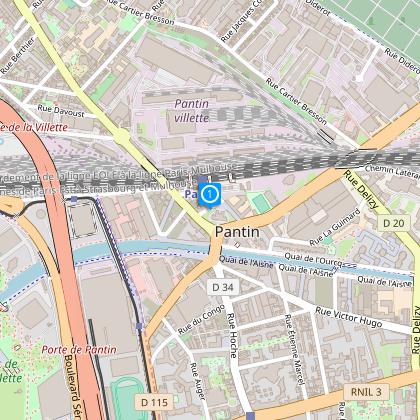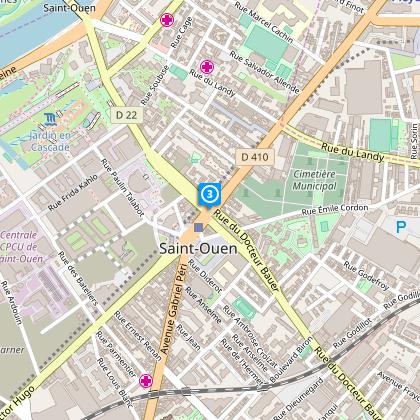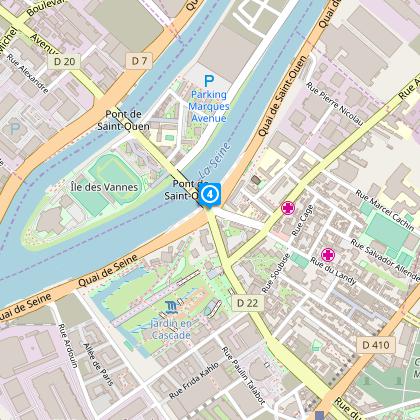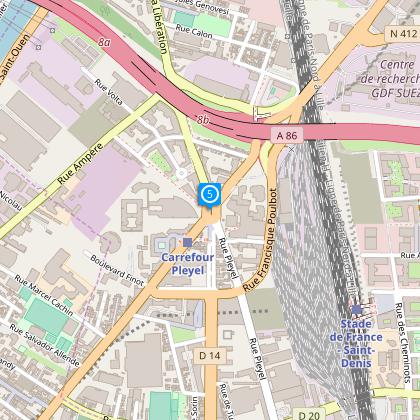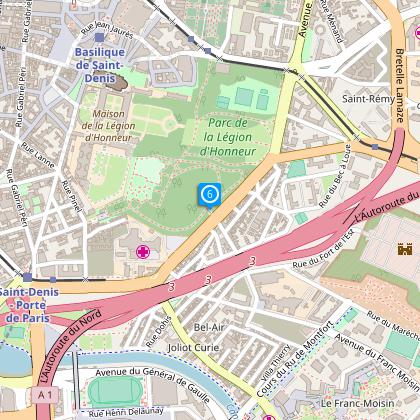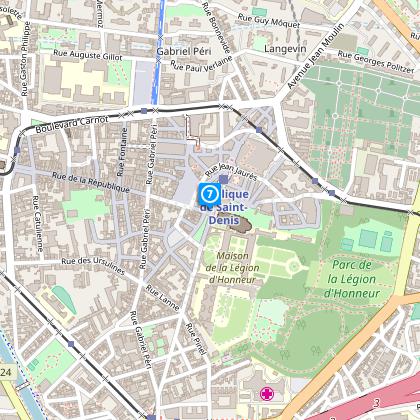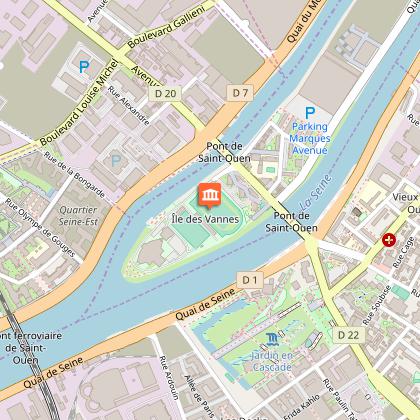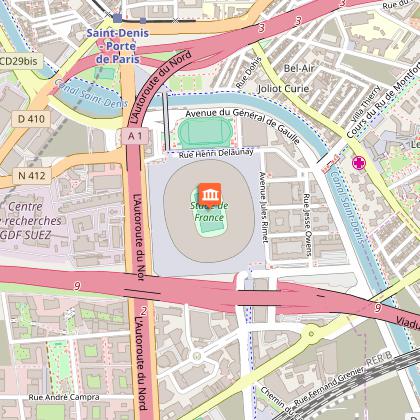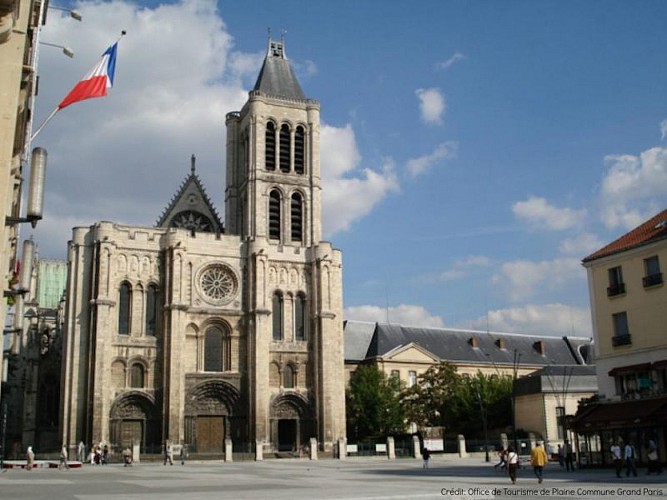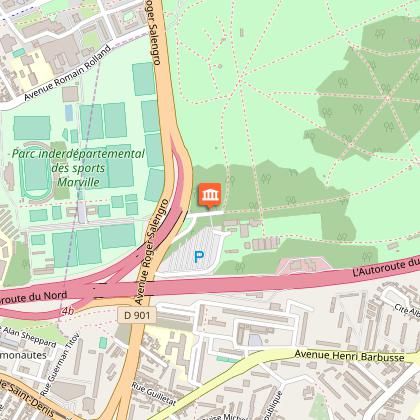Alert
Alerts
Type of practice
Walking
Easy
6h
Presentation
Description
Map
Steps
Points of interest
Cirkwi brief's
Ratings and reviews
See around
24 km for 2024
IGN cards
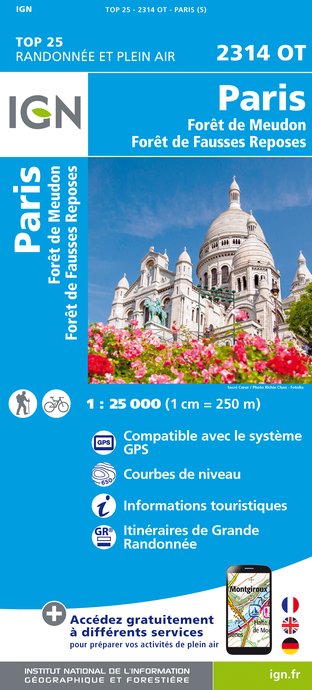
2314OT - PARIS FORÊT DE MEUDON FORÊT DE FAUSSES REPOSES
Editor : IGN
Collection : TOP 25 ET SÉRIE BLEUE
Scale : 1:25 000
13.90€
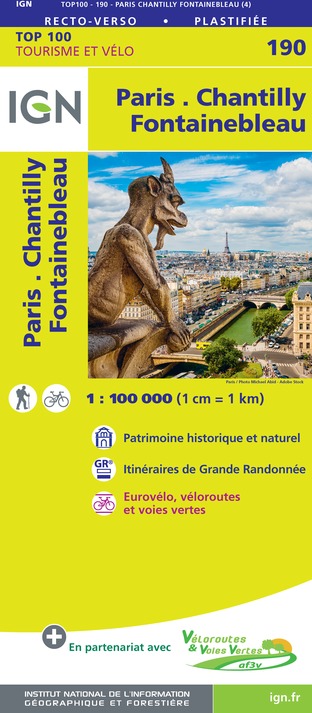
190 PARIS CHANTILLY FONTAINEBLEAU
Editor : IGN
Collection : TOP 100
Scale : 1:100 000
8.40€
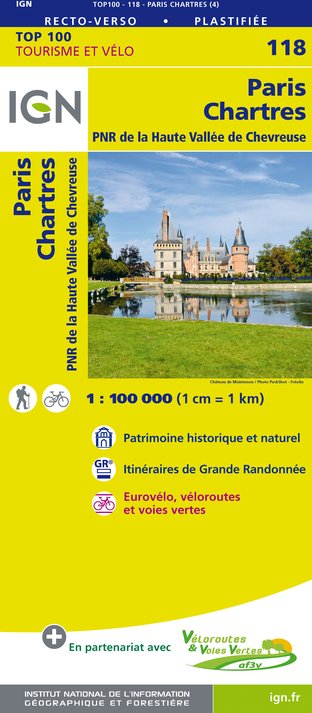
118 PARIS CHARTRES PNR DE LA HAUTE VALLÉE DE CHEVREUSE
Editor : IGN
Collection : TOP 100
Scale : 1:100 000
8.40€
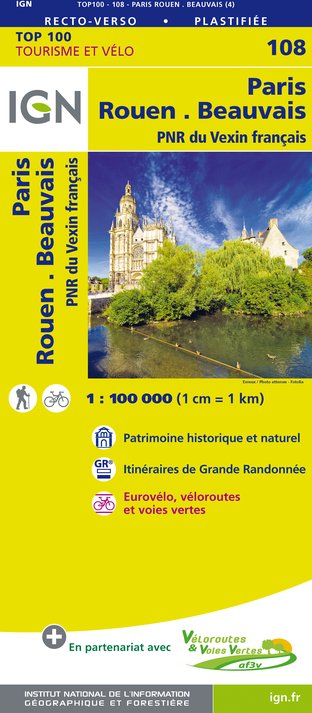
108 PARIS ROUEN BEAUVAIS PNR DU VEXIN FRANÇAIS
Editor : IGN
Collection : TOP 100
Scale : 1:100 000
8.40€
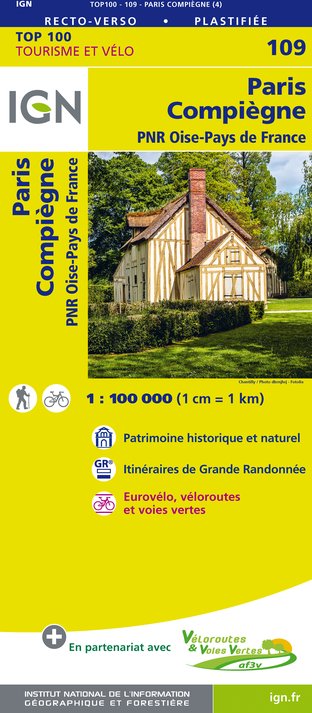
109 PARIS COMPIÈGNE PNR OISE-PAYS DE FRANCE
Editor : IGN
Collection : TOP 100
Scale : 1:100 000
8.40€
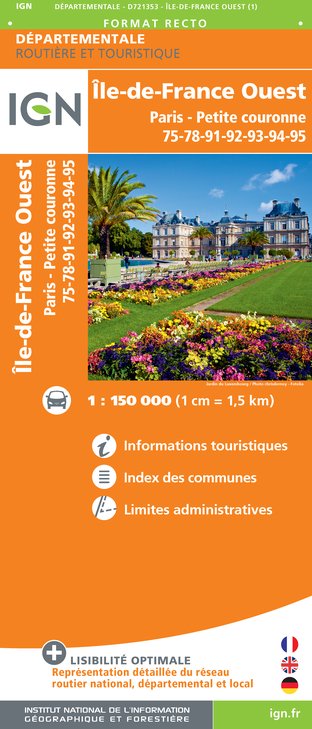
D75-95 ÎLE-DE-FRANCE OUEST
Editor : IGN
Collection : CARTES DÉPARTEMENTALES IGN
Scale : 1:150 000
5.90€
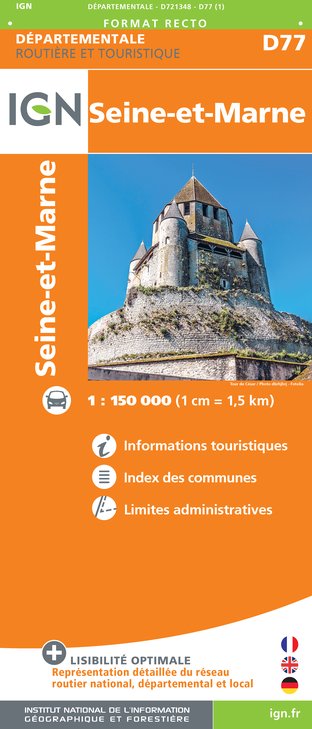
D77 SEINE-ET-MARNE
Editor : IGN
Collection : CARTES DÉPARTEMENTALES IGN
Scale : 1:150 000
5.90€
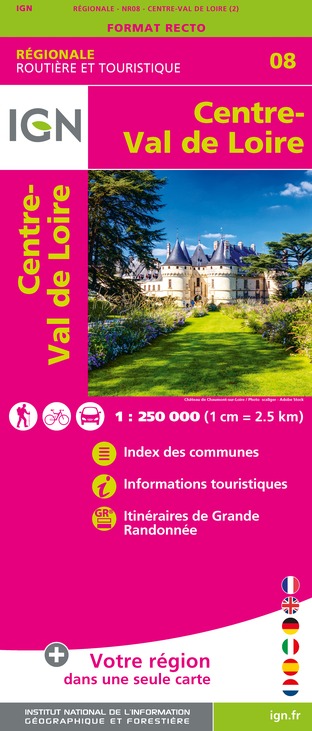
NR08 CENTRE-VAL DE LOIRE
Editor : IGN
Collection : CARTES RÉGIONALES IGN
Scale : 1:250 000
6.80€

NR03 ÍLE DE FRANCE
Editor : IGN
Collection : CARTES RÉGIONALES IGN
Scale : 1:250 000
6.80€

NR01 HAUTS-DE-FRANCE
Editor : IGN
Collection : CARTES RÉGIONALES IGN
Scale : 1:250 000
6.80€
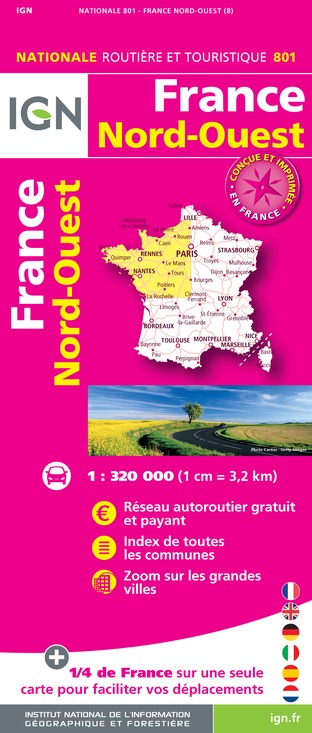
801 FRANCE NORD OUEST
Editor : IGN
Collection : CARTES NATIONALES IGN
Scale : 1:320 000
6.10€

EUROPE
Editor : IGN
Collection : DÉCOUVERTE DES PAYS DU MONDE IGN
Scale : 1:2 500 000
7.00€
Description
The itinerary allows you to discover the different sites for the JOP 2024 – Paris Olympic Games, passing by Saint-Denis canal, Saint-Ouen, l'Île des Vannes, Saint Denis, parc des sports de Marville, parc départemental Georges-Valbon.
A patrimonial and environmental discovery tour.
Technical Information
Walking
Difficulty
Easy
Duration
6h
(1d)
Dist.
24 km
Type of practice
Walking
Easy
6h
Show more
Altimetric profile
Starting point
2
Place du Président Salvador Allende
,
93500
Pantin
Lat : 48.89711Lng : 2.40083
Steps
Points of interest
Additional information
Reach the itinerary
Pantin City Hall : RER E ; station Pantin
Parc Georges Valbon :
- RER E station La Courneuve
- Tramway T1 stop at "6 routes"
On September 30th only free shuttles between the RER B, Tram T1 and the park Georges Valbon.
Data author

proposed by
CDRP 93
1Ter Place des martyrs de la Résistance et de la Déportation 93110 Rosny-sous-Bois France
The Cirkwi brief
Experience Paris 2024 Olympic Sites on Foot: A Cultural Journey
Embarking on this meticulously curated walk by FFRandonnée Seine-Saint-Denis unveils not just the future venues of the Paris 2024 Olympics but stitches together a vibrant mosaic of cultural and architectural marvels along the Seine-Saint-Denis. Spanning various distances, it invites enthusiasts to tread through the historical streets, alongside the Canal Saint-Denis, and explore the remarkable urban canvas of Street Art Avenue. This journey transcends being just a walk; it's an immersive story told through the lanes of Saint-Denis, the iconic Ile de Vannes, and the sprawling beauty of the Parc départemental Georges-Valbon, all while fostering a connection with the athletic spirit of the future Olympics.
Brief Technical Assessment for Enthusiasts
With a total distance of 24.049 km, encompassing a minimum altitude of 24 meters and peaking at 56 meters, the trail presents a modestly challenging terrain with a total positive elevation ranging between 32 to 49 meters. Suitably structured for a variety of participants, the route's flexibility in distance—offering 10 km, 15 km, 18 km, and the full 24 km options—caters to walkers of all fitness levels while ensuring a comprehensive experience of the locales that will be pivotal during the Paris 2024 Olympics.
Seasonal Visiting Tips and Safety
No matter the season, being prepared enhances your experience on this diverse trail. In spring and autumn, layering is key due to variable weather conditions. Summer demands sunscreen, hats, and plenty of water to stay hydrated under the sun. Winters, although mild, require warm clothing. Always keep a map and phone charged for emergencies. Moreover, staying on marked paths is crucial for safety and to preserve the natural and urban environments you'll be exploring. Check local advisories for any temporary restrictions or events that might affect accessibility.
The Pulse of Seine-Saint-Denis: A Historic Insight
Seine-Saint-Denis boasts a rich tapestry of history and culture, seamlessly blending with its contemporary significance as a host for the upcoming Paris 2024 Olympics. From its origins as a crucial industrial hub to being a melting pot of artistic and architectural innovation, this department has always been at the forefront of progress. The iconic Canal Saint-Denis and the architectural marvel of the Ile de Vannes sports complex stand as testaments to the area’s legacy and its continuous evolution into a vibrant community, echoing the energetic spirit that the Olympics stand for.
Weather Overview and Best Visitation Times
Seine-Saint-Denis enjoys a temperate climate, with mild winters and warm summers. Rainfall is evenly distributed throughout the year, making any season suitable for a visit. However, for the most comfortable walking experience, late spring to early summer (May-June) and early autumn (September-October) are ideal. These periods offer pleasant temperatures and fewer rain showers, enhancing the enjoyment of outdoor activities and the exploration of the Olympic sites and the rich cultural heritage of the region.
Embarking on this meticulously curated walk by FFRandonnée Seine-Saint-Denis unveils not just the future venues of the Paris 2024 Olympics but stitches together a vibrant mosaic of cultural and architectural marvels along the Seine-Saint-Denis. Spanning various distances, it invites enthusiasts to tread through the historical streets, alongside the Canal Saint-Denis, and explore the remarkable urban canvas of Street Art Avenue. This journey transcends being just a walk; it's an immersive story told through the lanes of Saint-Denis, the iconic Ile de Vannes, and the sprawling beauty of the Parc départemental Georges-Valbon, all while fostering a connection with the athletic spirit of the future Olympics.
Brief Technical Assessment for Enthusiasts
With a total distance of 24.049 km, encompassing a minimum altitude of 24 meters and peaking at 56 meters, the trail presents a modestly challenging terrain with a total positive elevation ranging between 32 to 49 meters. Suitably structured for a variety of participants, the route's flexibility in distance—offering 10 km, 15 km, 18 km, and the full 24 km options—caters to walkers of all fitness levels while ensuring a comprehensive experience of the locales that will be pivotal during the Paris 2024 Olympics.
Seasonal Visiting Tips and Safety
No matter the season, being prepared enhances your experience on this diverse trail. In spring and autumn, layering is key due to variable weather conditions. Summer demands sunscreen, hats, and plenty of water to stay hydrated under the sun. Winters, although mild, require warm clothing. Always keep a map and phone charged for emergencies. Moreover, staying on marked paths is crucial for safety and to preserve the natural and urban environments you'll be exploring. Check local advisories for any temporary restrictions or events that might affect accessibility.
The Pulse of Seine-Saint-Denis: A Historic Insight
Seine-Saint-Denis boasts a rich tapestry of history and culture, seamlessly blending with its contemporary significance as a host for the upcoming Paris 2024 Olympics. From its origins as a crucial industrial hub to being a melting pot of artistic and architectural innovation, this department has always been at the forefront of progress. The iconic Canal Saint-Denis and the architectural marvel of the Ile de Vannes sports complex stand as testaments to the area’s legacy and its continuous evolution into a vibrant community, echoing the energetic spirit that the Olympics stand for.
Weather Overview and Best Visitation Times
Seine-Saint-Denis enjoys a temperate climate, with mild winters and warm summers. Rainfall is evenly distributed throughout the year, making any season suitable for a visit. However, for the most comfortable walking experience, late spring to early summer (May-June) and early autumn (September-October) are ideal. These periods offer pleasant temperatures and fewer rain showers, enhancing the enjoyment of outdoor activities and the exploration of the Olympic sites and the rich cultural heritage of the region.
Automatically generated.
Ratings and reviews
To see around
